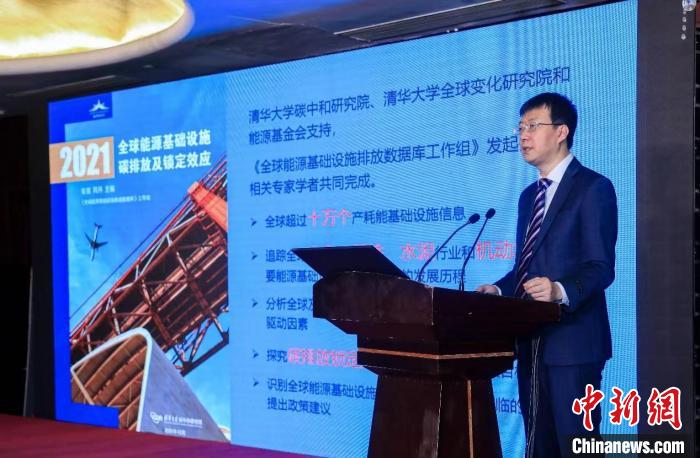Chinanews, Beijing, December 22 (Reporter Gao Kai)
Supported by the Institute of Carbon Neutrality of Tsinghua University, the Institute of Global Change of Tsinghua University, and the Energy Foundation, the Global Energy Infrastructure Emissions Database Working Group initiated and organized relevant experts and scholars to complete the Global Energy Infrastructure Carbon Emissions and Lock-in Effect research report The press conference was held in Beijing a few days ago.
The current global economic development is highly dependent on fossil energy. Energy infrastructure such as electricity, steel, and cement often lasts as long as several decades. New infrastructure will generate a large amount of carbon emissions in the future and produce a carbon emission lock-in effect. In the context of responding to climate change, the global energy infrastructure will face severe transformation challenges in the next few decades. Its transformation path and the climate and environmental impact during the transformation process are major issues of common concern for scientists and decision makers.
The report pointed out that thermal power, steel, cement, and land transportation are all basic industries and sectors that support global social and economic development, and they have developed rapidly in the past 30 years. The global carbon emissions of major energy infrastructures are generally increasing. In 2020, the global thermal power, steel, cement, and land transportation sectors will emit 24.1 billion tons of carbon dioxide, accounting for about 70% of the total global carbon emissions. Driven by the demand for infrastructure construction, in recent years, emerging economies have contributed most of the world’s new production capacity, and their carbon emissions have grown rapidly, becoming the biggest driving force for the carbon growth of the above-mentioned major energy infrastructures.
It is worth noting that new infrastructure will continue to operate for decades in the future and will continue to generate carbon emissions, and its carbon lock-in effect will pose a greater threat to the global climate goals set by the Paris Agreement. If the world’s major fossil energy infrastructure continues to expand, the carbon lock-in effect of continuous new infrastructure will pose a huge challenge to the low-carbon transition. The carbon lock-in effect is not static. Measures such as shortening the service life of energy infrastructure and reducing capacity utilization can reduce its carbon-locked emissions.
On this basis, the report puts forward four recommendations for the green transformation of global energy facilities: First, it is necessary to reverse the inertia of high-carbon energy infrastructure investment, avoid the long-term carbon lock-in effect brought about by new high-carbon growth, and reduce the risk of stranded assets; The second is to accelerate the upgrading and transformation of energy infrastructure and orderly phase-out, improve technology and energy efficiency, and reduce carbon emission intensity; the third is to increase the research and development of emerging low-carbon technologies, and promote emission reductions such as hydrogen energy steelmaking, carbon capture and storage, etc. Demonstration and industrial application of technology; fourth, seize the development opportunities of green recovery in the post-epidemic era, deepen the development of new energy industries such as renewable energy and new energy vehicles, strengthen international cooperation in green technologies, and build a global zero-carbon energy system.
At the press conference, the participating experts discussed the significance of the global energy infrastructure emissions database to achieve my country's carbon neutrality goals and promote global climate governance, and the green transformation path of energy infrastructure. Experts agree that accelerating the construction of a green, low-carbon, safe and efficient energy infrastructure is the only way for global low-carbon development. Paths and scientific and technological innovation perspectives inspire my country’s development direction to achieve carbon neutrality, help countries implement the temperature control targets of the Paris Agreement, and achieve global green and low-carbon development
















 RCCN WeChat QrCode
RCCN WeChat QrCode Mobile WebSite
Mobile WebSite
